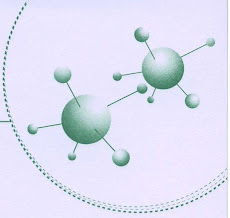Cells, the building blocks of human body, are the smallest units that perform all vital physiological functions. They are produced by the division of pre-existing cells and each cell functions to maintain homeostasis at the cellular level. Homeostasis at the tissue, organ, system and organism levels reflects the combined and coordinated actions of many cells.
In human cell, there exists are two different kinds of genetic material: deoxyribonucleic acid (DNA) which is the hereditary material of genes, and ribonucleic acid (RNA) which contains the information necessary to build various proteins.

DNA is a nucleic acid that contains the genetic information that allows living things to function, grow and reproduce. It is found primarily in the nucleus of human cells and small amounts are also found in the mitochondria (cell energy powerhouse).
DNA is a long polymer of the simple units called nucleotides, which are held together by a backbone made of sugars and phosphate groups. This backbone carries four types od molecules called bases (adenine, guanine, thymine and cytosine) and it is the sequence of these four bases that encodes the genetic information. The major function of DNA is to encode the sequence of amino acid residues in proteins, using the genetic code. To read genetic code, cells make a copy of a stretch of DNA in the nucleic acid RNA. These RNA copies can then be used to direct protein synthesis.
DNA REPLICATION & TRANSCRIPTION
For cells to live and grow, the genetic information in DNA must be (1) propagated and maintained from generation to generation, and (2) expressed to synthesize the components of a cell. These two functions are carried out by the processes of DNA replication and transcription.
DNA Replication
DNA is composed of two strands that wrap around each other to form a double helix. The two strands are held together by base pairing and are anti-parallel. During replication, the two parental strands are separated, and each is used as a template for the synthesis of a new strand of DNA. Synthesis of the nascent DNA strands is carried out by a family of enzymes called DNA polymerases. Base incorporation is directed by the existing DNA strand; nucleotides that base-pair with the template are added to the nascent DNA strand. The product of replication is two complete double-stranded helices, each of which contains all of the genetic information (has the identical base sequence) of the parental DNA.
Transcription & Translation
In transcription, DNA acts as a template directing the synthesis of RNA. RNA is single stranded polymer similar to DNA except that it contains the sugar ribose instead of 2-deoxyribose and the base uracil instead of thymidine. The two strands of DNA separate transiently, and one of the two single-stranded regions is used as a template to direct the synthesis of an RNA strand. As in DNA replication, base pairing between the incoming ribonucleotide and the template strand determines the sequence of bases is directly transferred from DNA and RNA in transcription. After the RNA is synthesised, the DNA reverts to double-stranded form. Transcription is carried out by a family of enzymes called RNA polymerases. Following transription, newly synthesised RNA is often processed prior to being used to direct protein synthesis by ribosomes in a process called translation.
.jpg)



No comments:
Post a Comment